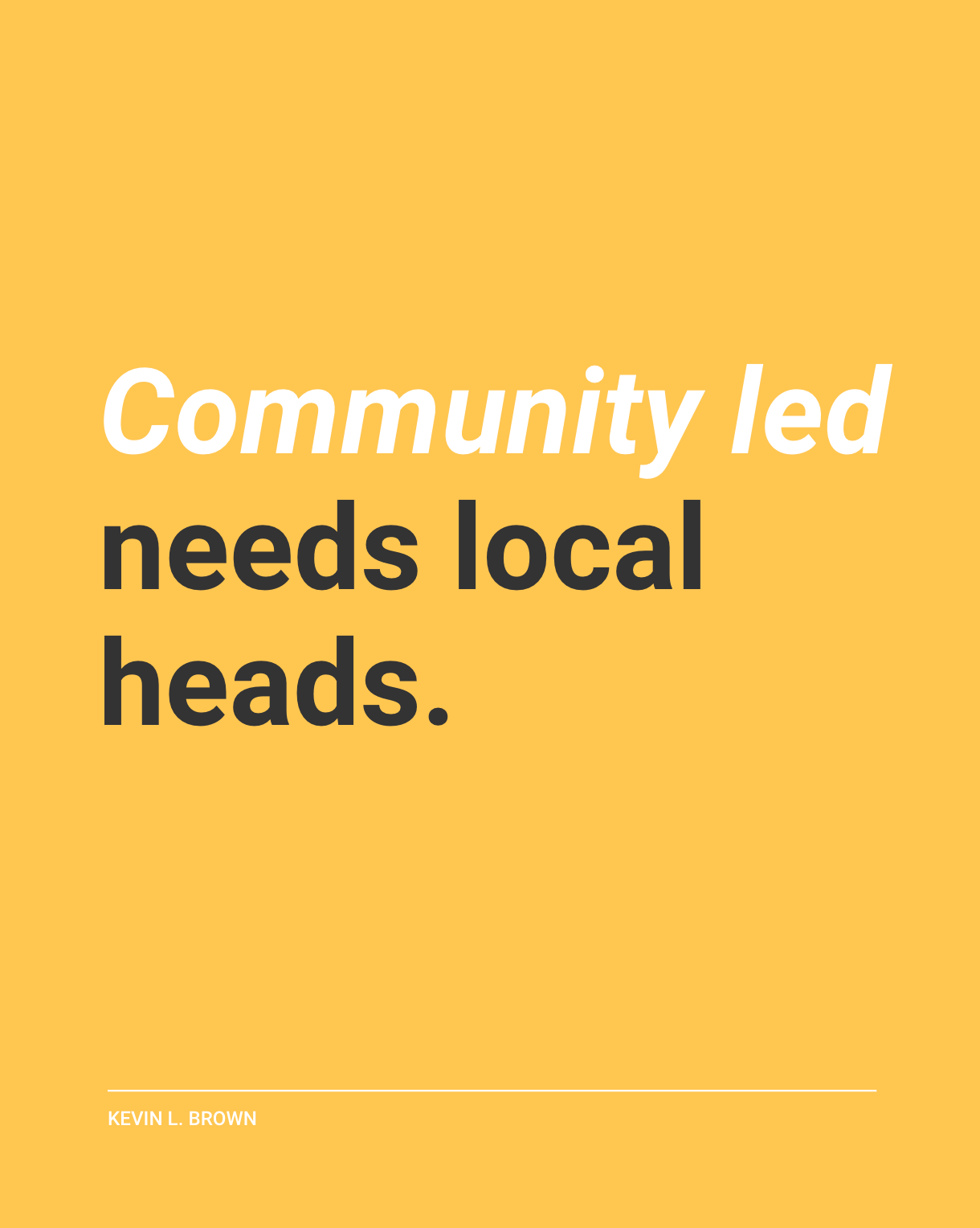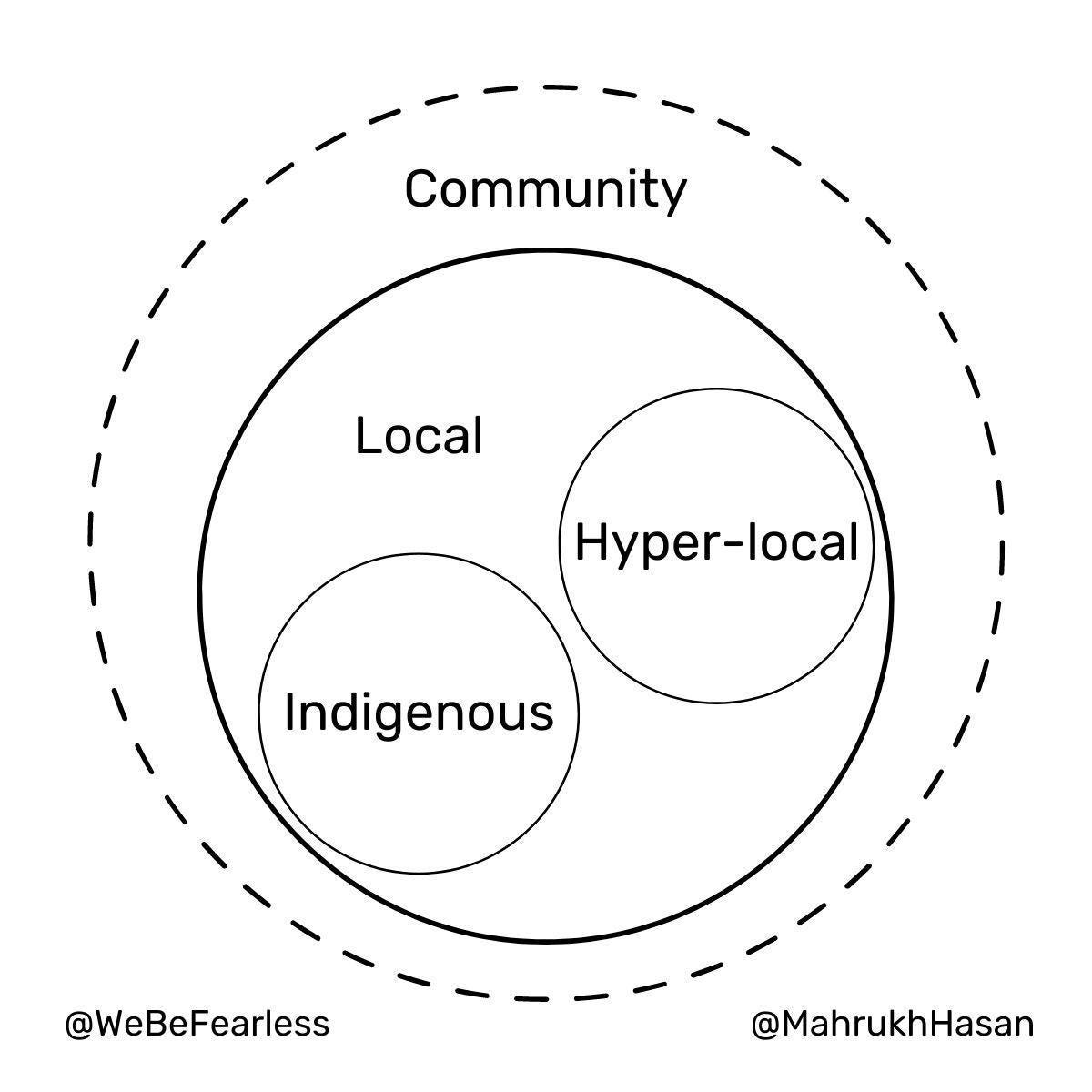Community led needs local heads.
The term locally led is being co-opted.
And it’s unfair to true community-led nonprofits.
In fact, it’s brand imperialism.
Consider this. ⤵
After working with 230 clients in 50 countries, we see four common types of international organizations:
1. Nonprofits based entirely in the Global North, working in the Global South.
❌ Never locally led.
2. Nonprofits with headquarters and most leaders/trustees in the Global North (some claim “just a fundraising team”) and satellite offices in the Global South.
❓ Rarely locally led. Even if there’s a Co-CEO, that’s still 50% of the led that’s not local.
3. Nonprofits with HQ in the Global South, where the CEO/founders from that community can access Global North donors through universities, living abroad, or fellowships/partnerships.
✔️ Locally led, with some privileges.
4. Nonprofits with HQ in the Global South, where the CEO/founders from that community live in the community and have few donor networks outside their country.
✔️❗️ Locally led, in the purest form. These are the most unseen, unheard, and underfunded (sometimes they’re not even registered organizations).
Words matter.
Because 95% of global foundations are based in North America and Europe. And these local NGOs directly receive just 0.4% of all international humanitarian assistance.
So every time others incorrectly use this community led buzzword, we shift the spotlight from grassroots nonprofit leaders who deserve it most.
Right?
One funder (focused on African-led organizations) said they must dig into all those nonprofits that apply as locally led but hide expat CEOs on their website.
Global names, local games.
So if you’re in the first two categories above — you may be doing noble work, but ensure your messaging is equally noble:
→ You could consider your model 𝘤𝘰-𝘰𝘸𝘯𝘦𝘳𝘴𝘩𝘪𝘱.
→ Or you might say 𝘱𝘢𝘳𝘵𝘯𝘦𝘳𝘪𝘯𝘨 𝘸𝘪𝘵𝘩 𝘤𝘰𝘮𝘮𝘶𝘯𝘪𝘵𝘪𝘦𝘴.
→ Or you could operate using 𝘤𝘰𝘮𝘮𝘶𝘯𝘪𝘵𝘺-𝘥𝘳𝘪𝘷𝘦𝘯 𝘥𝘦𝘷𝘦𝘭𝘰𝘱𝘮𝘦𝘯𝘵.
→ Your programs — not organization — may be 𝘤𝘰𝘮𝘮𝘶𝘯𝘪𝘵𝘺 𝘭𝘦𝘥.
→ Or you could boast your international team (like we do at MIGHTY ALLY).
But just like us — even though I’ve lived for seven years in three African countries and 83% of our team is in the Global South — if a European or American like me sits atop your team page...
It’s a truth-stretching and false equivalency to claim locally led.
To be clear —
We leaders from the Global North still have a role to play in the social sector.
Although we can do better.
Let’s start by being more careful about how we describe our organizations.
When in doubt:
Just look at your governance.
And look at the top of your org chart.
Then don’t claim what you’re not.
Because global branches ≠ local roots.
💪🏽💛
The Daily Bonus
Wisdom from Mahrukh ماہ رخ माह रुख़ Hasan حسن हसनماہ رخ माह रुख़ (Maya) Hasan حسن हसन
“This reminds me of the importance of being clear about the ‘community’ in question. Who is considered a member of this community? It's especially important when considering the power dynamics that exist within communities themselves.”
✔️ Is it an Indigenous community (the original people of a given locality)?
✔️ Is it a local community (the people who live, reside, or have nationality in a given locality)?
✔️ Is it a hyper-local community (the people who live, reside, or are registered in a given sub-locality)?
✔️ Is it a community more generally (the people that span geographic boundaries but maintain legal or relational or cultural ties to one of the above communities - e.g., diaspora included)?
“I've also created a simple graphic to share my thoughts.”



